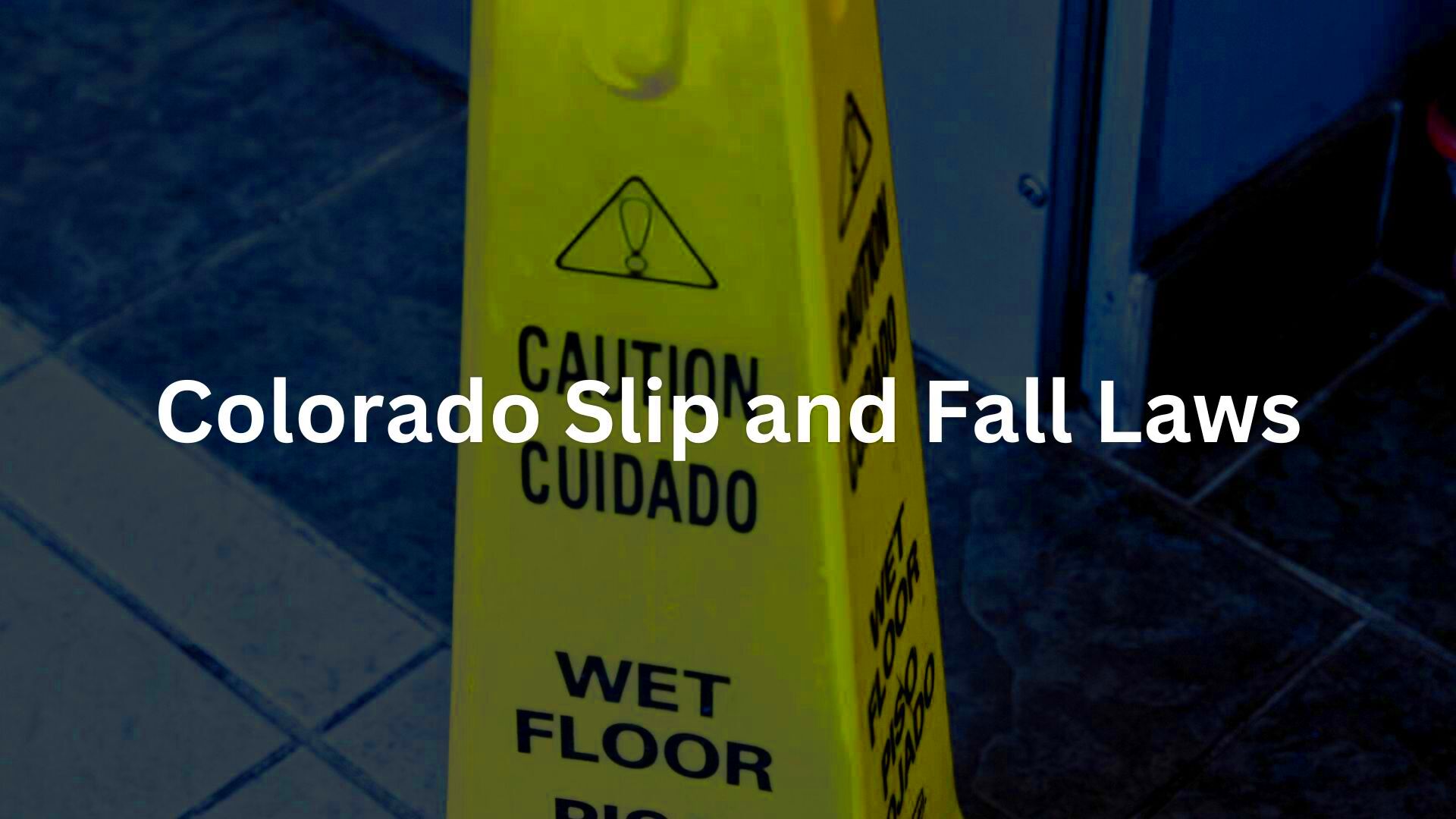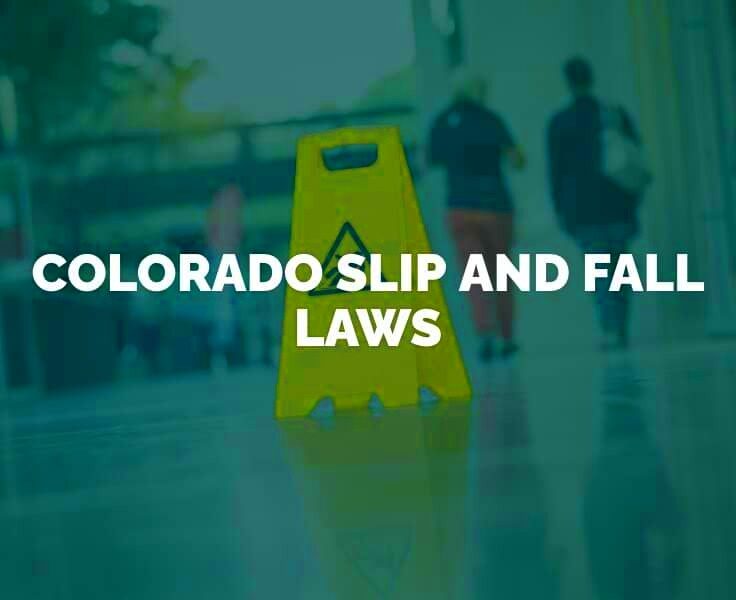Colorado Slip and Fall Laws Explained
Slip and fall accidents in Colorado can have consequences and it’s important to be aware of the laws related to them. These incidents often result in injuries and knowing your rights can greatly impact your recovery and compensation. Whether you’re strolling through a store visiting a friend’s house or enjoying a park being informed about slip and fall laws can assist you in handling the aftermath more effectively. In this article we’ll outline the key aspects you should know about these laws and their potential impact on your situation.
Understanding Premises Liability

Premises liability is a legal concept that makes property owners accountable for accidents that happen on their premises because of unsafe conditions. This idea plays a role in slip and fall cases in Colorado. Property owners are required to keep their property in a reasonably safe state to protect visitors from harm. If they neglect this duty they could be held responsible for any injuries that occur as a result.
Here are some important points to consider when it comes to liability on premises.
- Duty of Care: Property owners have a duty to address hazards that they know about or should have known about. This means keeping walkways clear, repairing dangerous conditions, and warning visitors about potential risks.
- Types of Visitors: Different levels of care are owed depending on whether the visitor is an invitee, licensee, or trespasser. Invitees, such as customers in a store, receive the highest level of protection.
- Reasonable Inspection: Owners are expected to conduct regular inspections to identify and address potential hazards.
Based on my experiences dealing with these situations can be quite challenging. For example a friend of mine had a mishap at a café. Grasping the intricacies of the law was essential in obtaining just compensation for their injuries.
Common Causes of Slip and Fall Accidents
Slip and fall accidents can occur for various reasons, usually stemming from unsafe conditions that property owners ought to take care of. Here are a few common factors contributing to such incidents.
- Wet Floors: Spills, rain, or snow can create slippery surfaces, especially if not promptly cleaned.
- Uneven Surfaces: Cracked sidewalks, uneven pavement, or poorly maintained floors can lead to trips and falls.
- Poor Lighting: Insufficient lighting can make it difficult to see hazards, increasing the risk of accidents.
- Clutter: Items left in walkways or passageways can cause trips and falls.
I have witnessed the impact of these matters on individuals. A relative of mine had an incident where they stumbled due to a step that was not level at a friends house resulting in a lengthy healing process. It is essential to tackle these issues to prevent mishaps and safeguard all parties concerned.
Legal Responsibilities of Property Owners
In Colorado property owners bear a responsibility to make sure their premises are safe for guests. This obligation goes beyond tidiness; it requires proactive upkeep and regular checks on the property to avoid mishaps. Consider it like this; when you host someone at your place you ensure it’s inviting and secure. The same concept holds true, for both commercial and residential property owners.
Here are some important legal obligations that property owners need to adhere to.
- Maintenance: Owners must regularly inspect their property for hazards like uneven flooring, broken handrails, or spilled liquids and address these issues promptly.
- Warning Signs: If a hazard cannot be immediately fixed, property owners are required to place clear warning signs to alert visitors. For instance, a “Wet Floor” sign can prevent accidents during cleaning.
- Prompt Repairs: Repairs should be carried out as soon as a problem is identified. For example, if a light bulb goes out in a stairwell, replacing it should be a priority.
In my view prioritizing safety is not just about following the rules. A friend of mine who runs a store makes it a point to inspect the floors and lighting regularly and they take great satisfaction in doing so. This approach not helps prevent mishaps but also establishes a credible image.
Steps to Take After a Slip and Fall Accident
Having a slip and fall incident can be scary and disorienting. Understanding the actions to take right after the accident can greatly impact how things progress. Here’s an easy to follow roadmap for you.
- Seek Medical Attention: Even if you don’t feel seriously injured, it’s essential to get checked by a healthcare professional. Some injuries may not be immediately apparent.
- Document the Scene: If possible, take photos of the accident site and any contributing factors, such as a spill or uneven surface. This evidence can be crucial in legal proceedings.
- Report the Incident: Notify the property owner or manager about the accident. Ensure that a formal report is made, which can help in establishing the incident officially.
- Gather Witness Information: If there were any witnesses, collect their contact details. Their statements can support your case.
Thinking back to a time in my life I remember when a relative had a mishap at a nearby park. Taking these actions allowed us to handle the situation efficiently and get the assistance needed for their healing process.
How to Prove Negligence in Slip and Fall Cases
To establish negligence in a slip and fall incident you need to show that the property owner did not uphold their responsibility to ensure safety leading to your injury. Here’s a breakdown of how you can prove negligence.
- Show the Hazard Was Present: Provide evidence that the hazard (e.g., a wet floor or cracked pavement) was present and contributed to the accident.
- Demonstrate Knowledge: Prove that the property owner knew or should have known about the hazard. This can be done through maintenance records or previous complaints.
- Link the Hazard to Your Injury: Establish a direct connection between the hazard and your injury. Medical records and expert testimony can help in linking the two.
- Negligence Impact: Show how the property owner’s failure to address the hazard led to your injury. This involves explaining how their actions or inactions caused the accident.
In an instance I encountered a friend was able to establish negligence through the use of maintenance records and testimonies from witnesses. These elements played a significant role in their legal proceedings. This strategy highlights the significance of keeping detailed records and having strong evidence to support ones case.
Compensation and Damages for Victims
Experiencing a slip and fall accident brings not only physical discomfort but also emotional and financial repercussions. In Colorado those who are affected by such incidents may have the right to seek different forms of compensation. Being aware of these options can assist you in navigating your healing journey more smoothly.
Here are some typical forms of compensation and restitution you could be awarded.
- Medical Expenses: This includes the cost of hospital visits, surgeries, physical therapy, and any ongoing medical care needed as a result of the accident.
- Lost Wages: If your injuries prevent you from working, you may be entitled to compensation for the income you lose during your recovery period.
- Pain and Suffering: This compensates for the physical pain and emotional distress caused by the injury. It’s often harder to quantify but is an important aspect of recovery.
- Property Damage: If your personal property was damaged in the fall (like your phone or glasses), you might be compensated for those damages as well.
Based on my experience I remember assisting a friend who had an accident at a shopping mall. Navigating the process of getting reimbursed for her medical expenses and lost income was quite challenging. However being aware of the different types of damages she could seek made a significant impact. Its crucial to maintain thorough documentation and seek advice from an attorney to ensure you receive the compensation you rightfully deserve.
Time Limits for Filing a Slip and Fall Lawsuit
In Colorado as in several other states there is a deadline for filing a lawsuit following a slip and fall incident. This deadline referred to as the statute of limitations is essential to remember to safeguard your legal rights.
For slip and fall cases in Colorado:
- Two-Year Rule: Generally, you have up to two years from the date of the accident to file a lawsuit. Failing to do so within this period can result in losing your right to seek compensation.
- Exceptions: There are some exceptions to this rule, such as if the injured person is a minor or if the injury is not discovered immediately. In such cases, the time limit may be extended.
- Consultation with an Attorney: It’s always a good idea to consult with a personal injury attorney as soon as possible after an accident. They can provide guidance on your specific case and help ensure you meet all necessary deadlines.
I recall a situation where a buddy wasn’t aware of the two year timeframe and nearly let it slip by. Luckily they sought advice from an attorney who assisted them in submitting the claim correctly. Taking steps can really impact the success of a legal matter.
Frequently Asked Questions
Understanding the laws surrounding slip and fall incidents can be a task and it’s normal to have a lot of questions. To address some of the concerns here are answers to frequently asked questions that might provide clarity.
- What if I was partially at fault? Colorado follows a modified comparative fault rule. If you are partially responsible for the accident, your compensation may be reduced by your percentage of fault. However, as long as you are less than 50% at fault, you can still recover damages.
- Do I need to prove the property owner was aware of the hazard? Yes, proving that the property owner knew or should have known about the hazard is crucial. This involves demonstrating that they had adequate time to fix or warn about the dangerous condition.
- How long will a slip and fall case take? The duration of a case can vary widely depending on its complexity, the extent of injuries, and how quickly evidence can be gathered. Some cases are resolved in months, while others may take years to conclude.
- Can I settle out of court? Yes, many slip and fall cases are settled out of court through negotiations with insurance companies or the responsible party. Settlements can be a quicker and less stressful option than going to trial.
These frequently asked questions aim to give you a better understanding of slip and fall claims and ease any concerns you may have. Its important to keep in mind that seeking guidance from a lawyer can offer personalized insights based on your circumstances.
Conclusion
Dealing with the intricacies of slip and fall laws in Colorado can be tough but grasping the key points can really make a difference. Its essential to know the responsibilities of property owners and the different types of compensation available to effectively handle the aftermath of an accident. Personal stories and anecdotes often emphasize how crucial it is to pay attention to every detail, from documenting the scene to being aware of the deadlines for filing a lawsuit. Remember that seeking legal advice can offer you the support needed to safeguard your rights and ensure you receive fair compensation. By staying informed and proactive you can navigate through the legal landscape more smoothly while focusing on your recovery.


